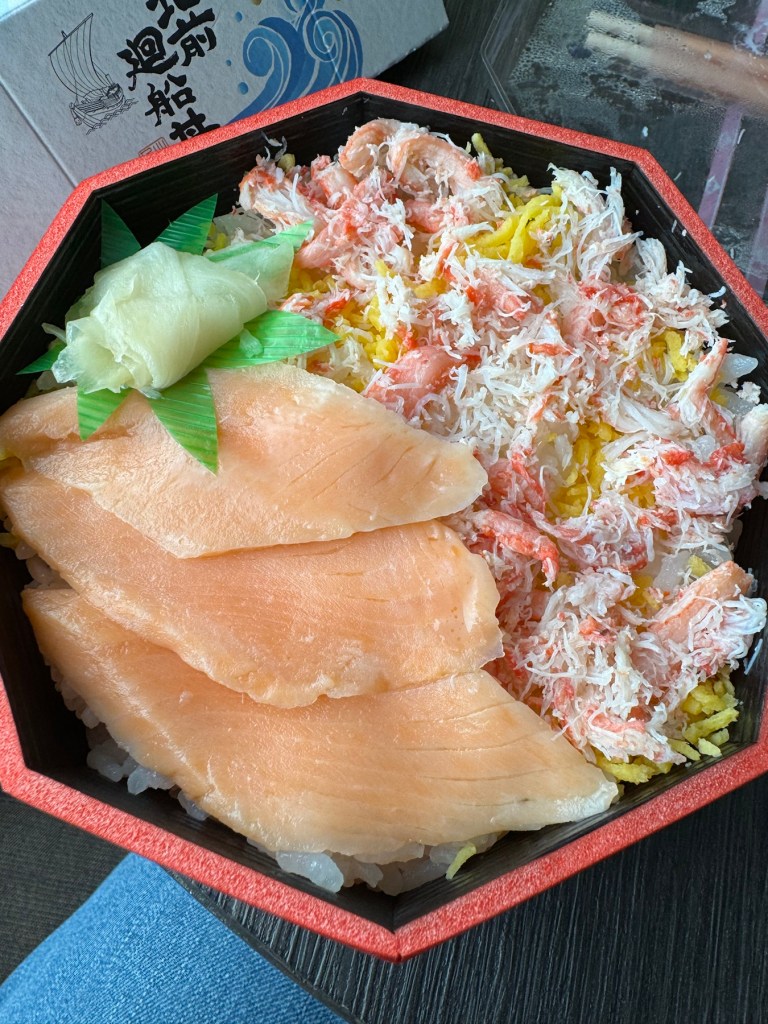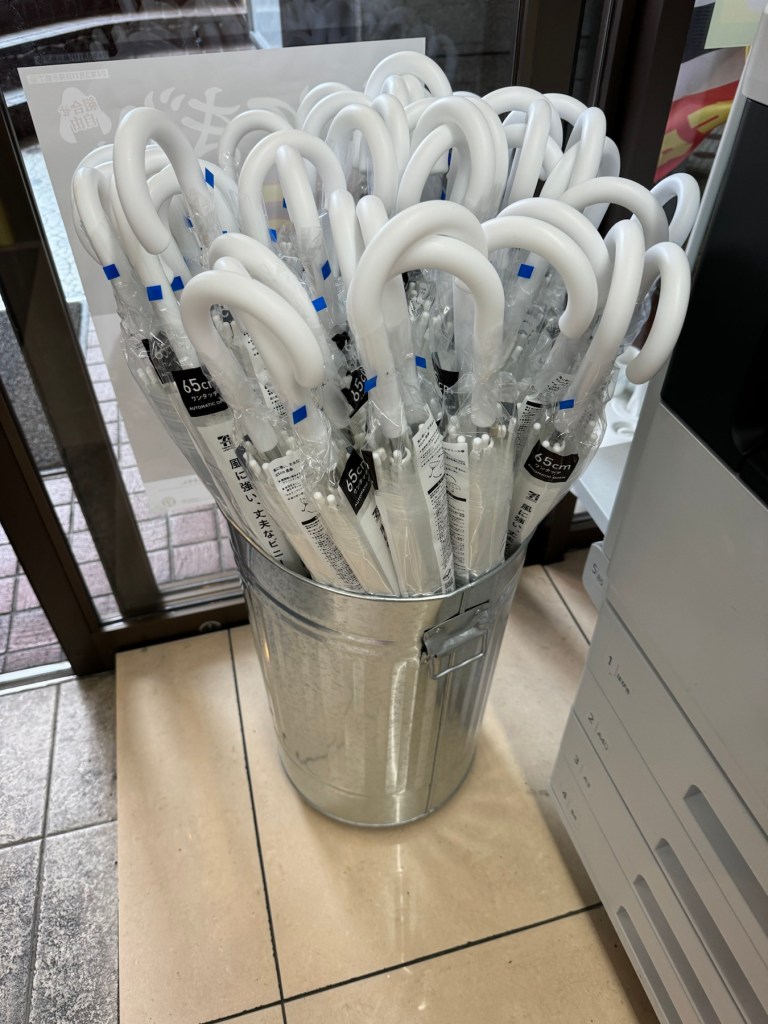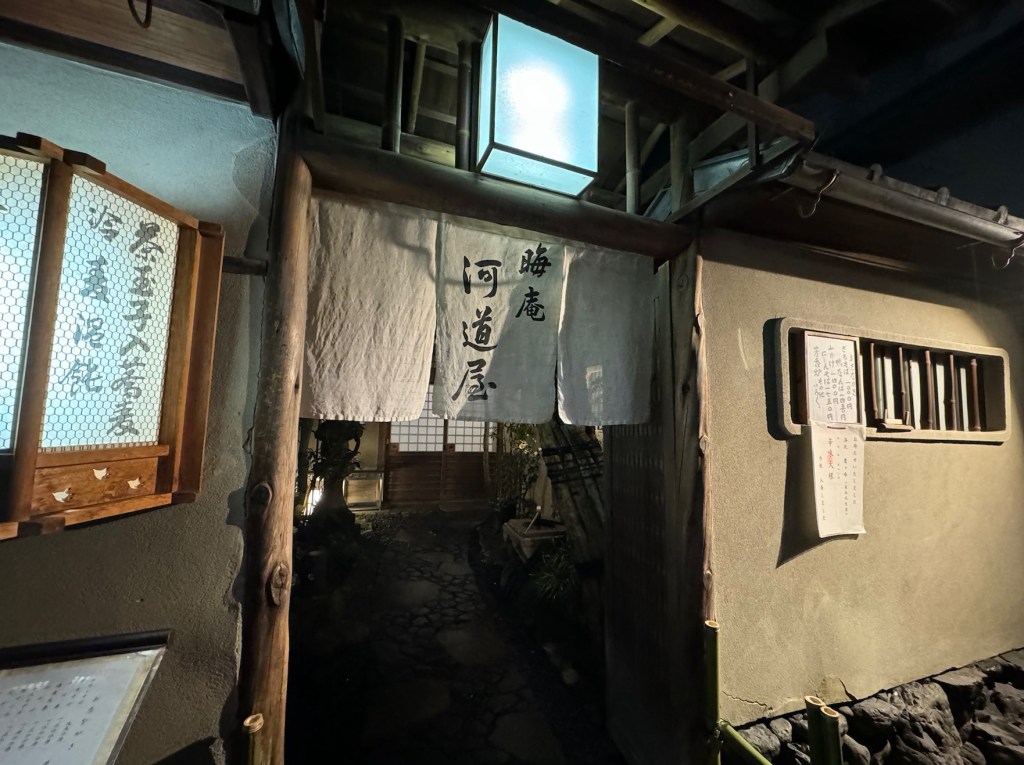It seems torrential rain is in our Japan DNA. We boarded the Thunderbird Shinkansen train with our Kanazawa ekiben box filled with snow crab and tuna. Just yum.


The Thunderbird whisked us through the scenic countryside, past mountains, lakes and cities to Kyoto in a little over two hours.
Kyoto is a city of cultural significance. For over a thousand years, it was the capital of Japan. (794-1868). The city is famous for its beauty, its well preserved traditions and more than 1,200 shrines and ancient temples. There are also local sweets and savory noodles that deserve mentioning.
Rain and umbrellas have been a big part of our trip so far. Outside almost every store or office are racks where people leave their umbrellas knowing they will be there when they return. There are also loads of clear plastic umbrellas for sale at every store.


The rain let us take a pause from historic touring. The sun and warmer weather are forecasted for tomorrow. We turned our focus to food and to relaxing in the hotel’s onsen. Soaking in a natural hot spring bath (onsen) is the quintessential Japanese experience. There are onsen resorts all over Japan. There isn’t much geothermal activity directly under Kyoto, this means the onsen have to pump up the water from deep underground. Soaking in a steaming hot spring bath is wonderful for the soul. No clothes, no tattoos and no pictures allowed.
A bowl of steaming and flavorful broth filled with soba, or buckwheat noodles, is comforting on a cold rainy day and also good for the soul. We wandered down a few side streets and came upon a noodle restaurant and they had an English menu. Along with the soup, we ordered a side dish of sobamaki which was noodles and wasabi rolled in nori. We were filled with delicious food and bright smiles.





Sweets in Kyoto are abundant. A traditional local speciality is Yatsuhashi. Similar to thin Japanese rice crackers or senbei but also like a crispy crepe it is typically filled with red bean paste and various flavors such as matcha, black sesame, or chocolate, Yes, there is a story about this treat that make me love it even more.
Some believe that it was invented by Yatsuhashi Kenkyo, a musician from the Edo period. Yatsuhashi, taught people not to waste any food, not even the rice that sticks to the pot. He used leftover rice to make sweet crackers. When he passed away, the people living in his town changed the shape of the cracker into the shape of a Japanese harp (koto) to honor him. Literally so sweet.

Fingers crossed there will be sightseeing in warm sunshine soon. Until then, soaking in the soup and the hot spring bath is just fine.
Looks amazing so far. Hope you get to see some sun! 🌞
LikeLike